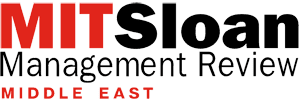RTO Mandates Won’t Fix a Broken Culture
Leaders need to stop obsessing about in-office time and start focusing on the six enablers that change how people work.
Topics
Column
News
- Why Cloud Security Is Breaking — And How Leaders Can Fix It
- IBM z17 Mainframe to Power AI Adoption at Scale
- Global GenAI Spending to Hit $644 Billion by 2025, Gartner Projects
- e& enterprise Partners with MIT Sloan Management Review Middle East for GovTech Conclave 2025
- More than 80% of Saudi CEOs adopted an AI-first approach in 2024, study finds
- UiPath Test Cloud Brings AI-Driven Automation to Software Testing

Jamie Jones/Ikon Images
THE TENSION OVER whether employees can continue to work from home or need to return to the office is often driven by executives obsessed with culture. Amazon and other companies have hinged their five-day-a-week return-to-office (RTO) mandates on it. But this obsession misses a lot of truths about how culture is actually created and what steers it to be “good” or “bad.”
At its core, workplace culture represents how we work together — the shared beliefs, behaviors, and norms that define how people collaborate to achieve common goals. The most effective workplace cultures share the important characteristics of psychological safety, a foundation of dependability and accountability, and a willingness to learn and adapt.
These elements aren’t contingent on physical space. Instead, they’re determined by all the dealings we have in the course of doing our work and contributing to our organization’s success. Research from Sigal Barsade, who was the Wharton School’s Joseph Frank Bernstein Professor of Management, shows that culture emerges through complex interactions among leadership behavior, team dynamics, and individual experience. While executives set the tone through their actions, culture is ultimately cocreated through daily interactions at every level.
During my career — which has included leading startups, running teams at Google and Slack, and founding Future Forum, a consortium that studied the future of work — I’ve learned firsthand the six key enablers of productive cultures. Let’s explore each, with examples of them in action.
Six Keys to Building a Strong Culture
The forces that shape culture are wide. They include leadership behavior, team dynamics, the presence or absence of trust, the accountability coworkers feel for each other, how decision-making works, and which behaviors get rewarded. Leaders can take specific actions to influence these factors and build the foundations for people to do great work.
1. Focus on nurturing dependability-based trust. Trust forms the foundation of an effective workplace culture. Dependability-based trust — the confidence that colleagues will follow through on commitments — is the base that effective teams are built on.
Developing trust requires accountability frameworks that clarify expectations and celebrate both the team’s efforts and results. This means setting clear objectives and establishing regular check-ins focused on progress, not surveillance. It means rewarding both what people deliver and how they work together.
My leadership team at Google invested significant time establishing priorities and clarifying what each person was responsible for delivering. We deliberately built “small wins” into our road map to increase trust among team members. Nothing builds confidence like seeing coworkers consistently deliver on their commitments.
Transparency in team performance is essential. At Google, everyone received the weekly business results. At Slack, we defaulted all communications to (internally) public access. This created transparency around expectations and made commitments visible using shared tools. Transparency reduces the churn of people wondering what’s really going on. It provides a basis for enlisting teams to support each other. Visibility reinforces a culture where people take ownership of their commitments.
2. Cultivate a first team mindset. One of the most transformative cultural shifts happens when leaders embrace the concept of the first team. This approach, popularized by author and consultant Patrick Lencioni, involves executives prioritizing their peer team over their functional silos — silos where, as Lencioni puts it, they’re “the papa bear or mama bear” to employees they already feel deep loyalty to.
A focus on the first team requires cross-functional leaders to align on priorities, commit to decisions, and hold each other accountable. The most effective organizations create visible artifacts showing how individual and team objectives connect to broader organizational goals, helping everyone understand their role in collective success.
The idea translates to the front lines, too. There, the concept means that project teams are given at least equal weight as functional reporting lines, with a focus on collaboration and shared goals. This mindset impacts organizational culture by placing an emphasis on results, clearer definitions of responsibilities, and the importance of communication.
3. Leverage personal user manuals to build connection. Personal user manuals have emerged as a powerful tool for accelerating trust and understanding, especially in distributed teams. These brief self-disclosures help colleagues understand how each person works best. Documents can include reflective notes on a person’s communication preferences, their values and what motivates them, strengths and growth areas, and personal context that might impact work. They can include specific prompts such as, “When I’m stressed, I tend to …” or “The best way to give me feedback is. …” These details provide practical guidance for productive collaboration.
I first started using personal user manuals at Google and then carried the practice to Slack. One critical lesson I learned is that leaders should go first and be genuinely open about their own working styles and challenges. When I shared my own user manual, it included notes about my inclination to process verbally when stressed and my tendency to jump to action. This created space for others to be equally authentic.
4. Establish team agreements. Effective workplace cultures don’t rely on rigid policies but rather on clear agreements within each team of collaborators about how work gets done. I used team agreements extensively during my time at Google and Slack, and formalized the approach even further when building Future Forum.
Team agreements make explicit the expectations about how a team works together. The best team agreements include clear norms around three issues:
Focused time together. Rather than arbitrary “in-office” days, effective teams identify which activities benefit most from synchronous collaboration (project kickoffs, complex problem-solving, retrospectives) and which are better suited for asynchronous, focused work (status updates on projects, individual heads-down work). Ensuring “core team hours” for collaboration (for example, 10 a.m. to 2 p.m. EST) balances individual needs with team needs.
Communication expectations. Clarifying response times (immediate for urgent messages, same day for important updates, within 48 hours for nonurgent requests) reduces anxiety and improves work-life boundaries. Teams benefit from establishing quiet hours or focus time for deep work. Making clear what tool will be used for off-hours urgent outreach allows people to turn off most notifications at the end of the day.
Decision-making protocols. Teams that explicitly define which decisions require consensus versus consultation perform better. DACI frameworks clarify each person’s role when collecting information and then acting on it (the acronym stands for the Driver, the Approver, the Contributors, and the Informed). This kind of clarity reduces confusion about how input is incorporated and who makes which decisions.
These agreements should be revisited quarterly to assess what’s working and adapt as needed.
5. Focus on outcomes, not attendance. Perhaps the most fundamental cultural shift needed in today’s workplace is moving from monitoring activity to measuring impact. Being driven by hustle culture perpetuates the tired belief that showing up matters more than delivering results.
Embracing outcomes-based approaches requires defining clear success metrics, providing autonomy in how work gets accomplished, and evaluating performance based on contribution rather than visibility. I detailed this in my recent column “How to Get Real About Measuring to Outcomes” about the success of this strategy at the high-end fashion retailer Neiman Marcus Group: An outcomes-based approach can dramatically increase retention rates and reduce unwanted attrition, and cut hiring times as the company’s workplace reputation grows — all while giving front-line employees almost unheard of degrees of schedule flexibility and freedom to swap shifts.
The measurement system I’ve used most, objectives and key results (OKRs), is a methodology that connects team contributions to broader organizational goals. Pioneered by Intel and popularized by Google, OKRs create a line of sight between daily work and strategic priorities.
Implementing outcomes-based cultures requires training managers to set clear expectations, provide regular feedback, and focus on impact rather than activity. It also means revising performance management systems away from lagging annual reviews to quarterly assessments of impact and teamwork.
6. Design intentional gatherings that build belonging. While daily colocation isn’t necessary for a strong culture, intentional in-person gatherings play a vital role in building connection and a shared identity. At Future Forum, the pandemic taught us the vital importance of quarterly gatherings designed with clear purpose.
Research from Atlassian confirms what we experienced: Purpose-driven gatherings create stronger bonds than random office encounters. The most effective organizations design retreats and offsite meetings around three core elements: meaningful work collaboration, skill development, and relationship building.
The connections established during these in-person “moments that matter” sustained us between gatherings. We reinforced connections through weekly social check-ins and icebreakers at the start of virtual meetings. We also used digital tools to have fun, share jokes, and stay connected across physical distance.
The organizations winning the culture battle aren’t those forcing rigid attendance policies. They’re the ones building trust-based, outcomes-focused environments where teams have clarity about what matters, ownership of how work gets done, and meaningful connection to a shared purpose.
As we navigate the continued evolution of the workplace, the organizations that thrive will be those that focus on culture as something they actively build through systems and behaviors — not something they hope will emerge through proximity alone. The truth about good culture is that it comes from how we work together, not simply where.





